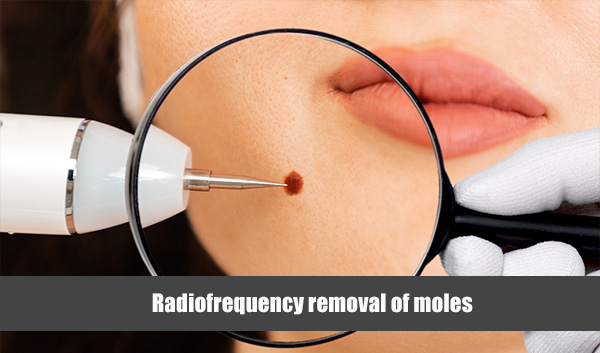Sometimes a small mole can be a headache or cause irritation. In such cases, it’s important to remove the mole. In the past, surgical removal often led to permanent scarring, but now there’s a better option: radio frequency mole removal. This method is painless, safe, and leaves no scars. Let’s learn more about it.
What is a mole?
A mole is an extra growth on the skin, usually black or brown. While moles are mostly harmless, they can sometimes cause discomfort. They appear within the first 20 years of life and are not contagious. Typically, a person has around 40 moles on their body, which last for about 50 years.
Why remove a mole?
Although moles are usually harmless, they can occasionally be a sign of cancer or abnormal cell growth. To rule out any risks, it’s best to consult a dermatologist and have the mole removed.
What is radio frequency mole removal?
Radio frequency mole removal is an advanced method for removing moles, skin tags, and warts. It uses radio waves to eliminate tissue or cells. This technique is more sophisticated than laser or electro-surgery methods. Instead of cutting, it vaporizes tissues using high-frequency methods. Radio frequency mole removal is commonly used for moles on the face, armpits, chest, neck, or arms.
Advantages:
- Minimal scarring risk
- Little pain or discomfort
- No bleeding
- Targeted removal without harming surrounding skin
- No stitches required
- Safe and fast healing
- Quick procedure
- Minimal heat generated during treatment
Disadvantages:
The risks and disadvantages of radio frequency mole removal are minimal. However, if a person has a cardiac pacemaker, there might be some risk of interference with the procedure since both the pacemaker and radio frequency utilize similar technology.
Procedure:
Radio frequency mole removal is typically performed under anesthesia. The dermatologist injects anesthesia beneath the mole using a small needle. Once the patient is sedated, a thin platinum wire loop is used to brush and vaporize the mole. Radio frequency is then applied through the wire, removing the mole while coagulating the blood vessels to prevent bleeding and minimize scarring.
After the procedure, a wound of the same size as the mole remains. It heals within a few weeks as new skin cells form. During the healing process, it’s important to avoid sun exposure and refrain from using cosmetics to prevent infection or irritation.
The entire radio frequency mole removal procedure takes only about five minutes. After removing the mole, the dermatologist examines it for any signs of malignancy. If the mole is found to be malignant, further examinations and treatments may be recommended.
If you’ve been hesitant to remove your mole due to concerns about pain or side effects, don’t wait any longer. Visit your skin specialist and opt for radio frequency mole removal.
